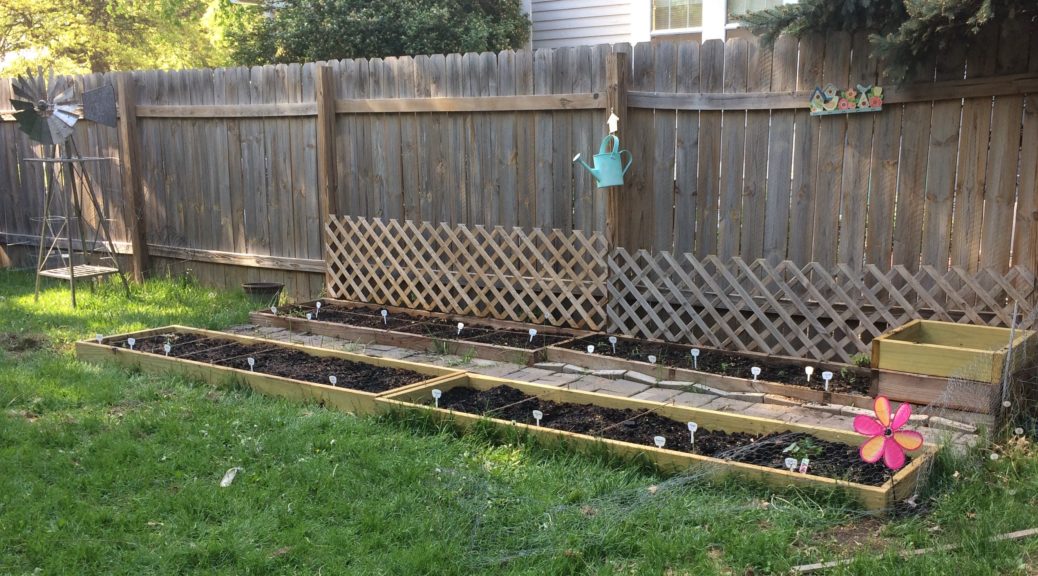
Growing Non-traditional Crops in the Square Foot Garden
You may remember that last year I doubled my Square Foot Garden. This year I got a little crazy and decided to double it AGAIN to make room for more of my favorite plants, and a crop of all new ones! These new plants include watermelon, pumpkins, asparagus, sweet potatoes, and even corn.
My Square Foot Garden
I love my Square Foot Garden because it allows me to grow so much in a small space. A square foot garden is simply a garden that’s divided into 1 foot by 1 foot sections. Each type of plant has a specific number that you can grow in each square – for example, you can grow 9 green bean plants in a square, or 2 cucumber plants. This maximizes your space and harvest. Last year I grew 82 plants and 14 different varieties in just 32 square feet!!
This year I really wanted to try some new things: sweet potatoes, asparagus, pumpkins, and watermelon were all on my “garden wishlist”. I also wanted to grow more of some of my favorites, like green beans, cabbage, acorn squash, and garlic. It was time to expand again! I considered adding a third raised bed to the left, but several of the plants I wanted to grow take up multiple one-foot blocks (pumpkins, watermelon, and asparagus in particular). So I decided to add two more raised beds in front of the originals, separated by a foot-wide walkway.
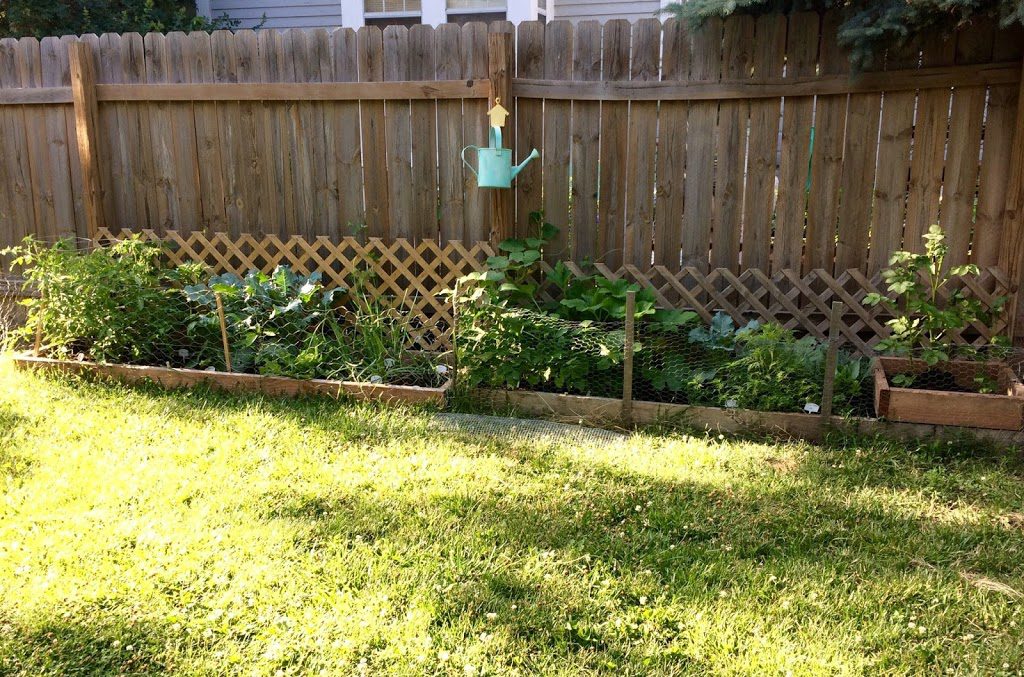
Building A Path
By happy accident I quickly found some bricks on our local Buy/Sell/Trade group. They were free, and all I had to do was haul them! I loaded up my unpaid task force (read: three of my kids plus a friend who’s like a daughter) and went to pick them up. It was a messy job, and I’m sure my minivan looked cool as a low-rider, but we got it done pretty quickly. When we got home I realized that I had enough to make my path two feet wide instead of one. We laid the bricks in front of the existing garden, trying several different designs before landing on the one I liked.
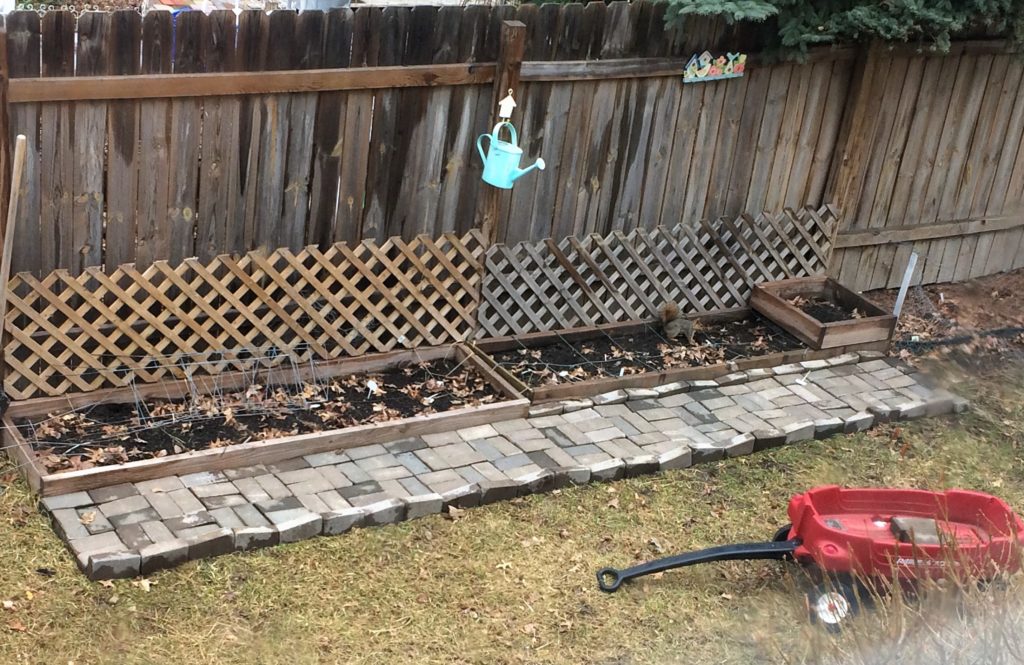
Disclaimer: I did not do this correctly at all. If you want to properly install a brick pathway, you should remove the grass, level the ground, and put sand down. I was not interested in doing it right, I just wanted it done. I’ve had some dandelions and grass pop up through the bricks, but not enough to bother me. I’m glad I just threw them down and got to work, rather than letting my desire for perfection delay me. I try to remember that “done is better than perfect”!
Doubling My Square Foot Garden (Again)
Next I built the frames for my two new raised beds and put them in place. Hoeing the dry grass out was exhausting, so I turned to my unpaid workforce once again. Each of us hoeing for just five minutes finally got it done! I then put down newspaper and filled the beds with a mixture of peat moss, top soil, vermiculite, compost, and manure. (For more detailed information on starting a raised bed, see my post called How To Garden In A Small Space.)
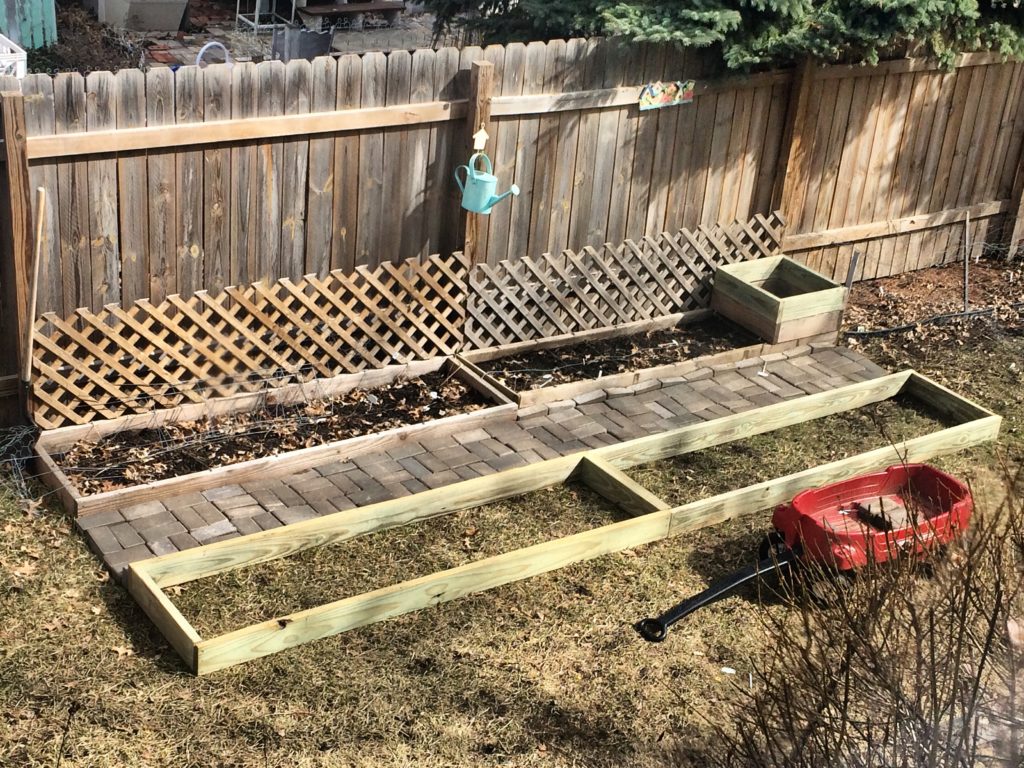
Winter lasted for about a million years here in Nebraska – we literally had a blizzard mid-April! So my poor garden didn’t get planted until well into May. Ideally things would be spaced out depending on the temperature. Plants like peas, onions, lettuce, and garlic prefer the cold, whereas sweet potatoes, pumpkins, and watermelons like nice warm soil. We jumped from winter to summer within about a week, so everything went in at once, no matter what temperature it preferred! Repeat after me: done is better than perfect.
After the planting was done I put up a not-so-cute chicken wire fence. While it won’t keep the squirrels from digging, it will keep out rabbits. I worked way too hard to let the bunnies eat my effort! It will also keep the chickens out on those occasions when I let them free-range in the yard. I wish I could let them in to help control bugs, but they’re not discerning enough. I recently read that guinea fowl will eat the bugs and leave your plants alone… I’m tucking that one in the “someday” file!
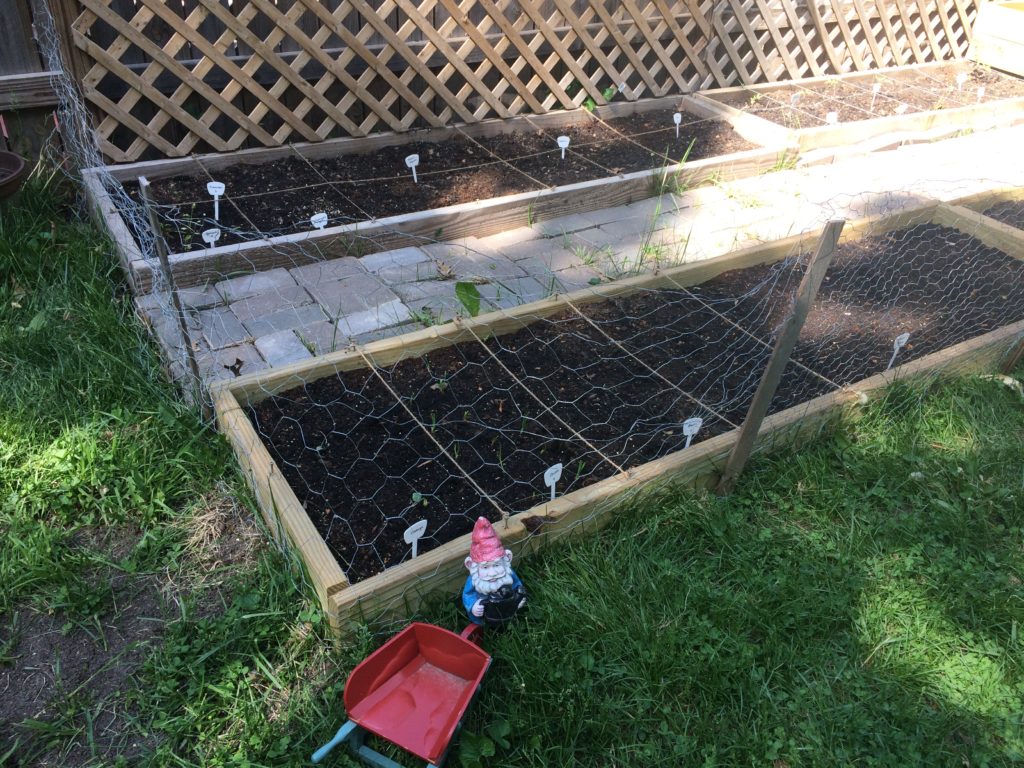
Growing “Exotic” Plants
Okay, so these aren’t exotic at all, but they are new to me. They’re also somewhat nontraditional in a Square Foot Garden, because they require 2-4 squares each. They include pumpkins, watermelon, sweet potatoes, asparagus, and even… CORN. I know, I’m a wild woman.
Pumpkins: I’ve wanted to grow pumpkins for a long time, but because of the large fruits and vines, I’ve been unable to make space. I chose to try mini pumpkins this year instead, which can be grown three to a hill in four garden squares. The photo on the seed packet shows those itty bitty pumpkins that fit in your palm, but the information on the back says they’re pie pumpkins that grow to 4-6 pounds each. I guess we’ll find out!
Watermelon: Like the pumpkins, watermelon are large and have long vines. I bought the smallest variety I could find locally, Sugar Babies, which are supposed to be around 8 pounds when ripe. I planted them three to a hill in four squares also, to the right of the pumpkins. My kids love watermelon (and so do the chickens!), and I’m looking forward to giving them some that’s homegrown!
Sweet potatoes: I’m most excited about these! I love sweet potatoes. I always thought they wouldn’t work in our zone, but a friend mentioned growing them last year and I had to try it. They have to be grown from slips (tiny plant starts), and I had a hard time finding them locally. Finally my mom found me a full sweet potato plant at a nursery, and it’s doing beautifully!
Asparagus: These are a “long game” plant – they’re perennials (they come back year after year), and you can’t harvest until the second year. The first year is spent developing good roots. They take up a lot of space, and of course have to be kept in the same spot in your garden. So these are my faith plant this year: I’m planting in faith, looking forward to a harvest in the future!
Corn: This is the one I’m most nervous about, but my husband has wanted to grow corn basically his entire life. For this Nebraska girl who’s used to seeing acres upon acres of corn every year, it seems unlikely that I could grow it in just two square feet! Corn is not usually planted in a Square Foot Garden, so the instructions were a little murky, with some sources saying to plant 3 kernels to a square and others saying 4. Most places agree that you have to plant at least four rows for the corn to pollinate properly. That’s a total of 16 stalks in 2 square feet!! I might regret this. I’ll let you know how it goes.
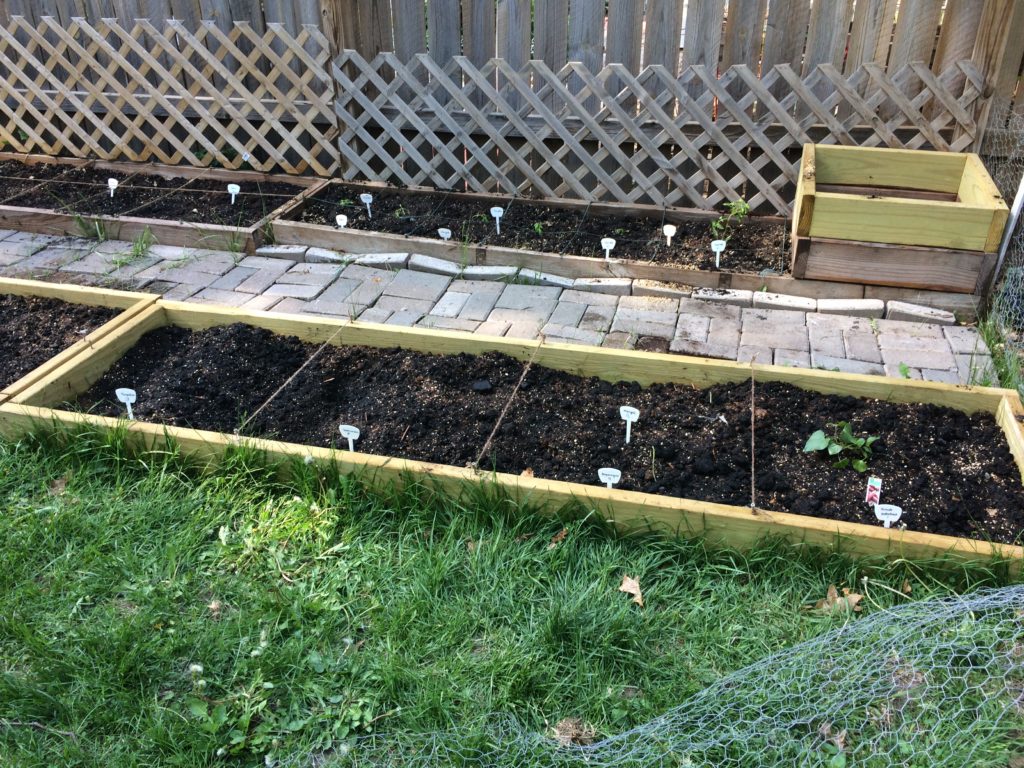
Planting the Old Reliables
The left side of my garden contains the more traditional plants that pretty much everyone grows. I doubled many of these this year: onions, garlic, cabbage, green beans, cucumbers, and squash. Green beans are probably my favorite thing to grow; they produce a lot, taste great fresh, and are fun to hunt for. This year I did a huge section of them! If I’m lucky I may even have enough to do some canning. I also have peppers, tomatoes, and potatoes in the back right side. I started the peppers and tomatoes from seeds again this year, but with our late spring they didn’t get very big.
Surprisingly, my squash didn’t do great last year. You know how everyone says zucchini will take over your garden? I got exactly one zucchini and exactly one acorn squash last summer. It was pretty sad. Fun fact, squash grows both male and female flowers and is able to pollinate itself with just one plant. But my zucchini only grew male flowers until the very end, denying me any fruit. My acorn squash had the right parts, but it got some kind of root rot. This year I planted two of each type of squash, in hopes that they will pollinate a little better and give me an actual harvest! I gave them all two full squares, front to back, so they can spread out.
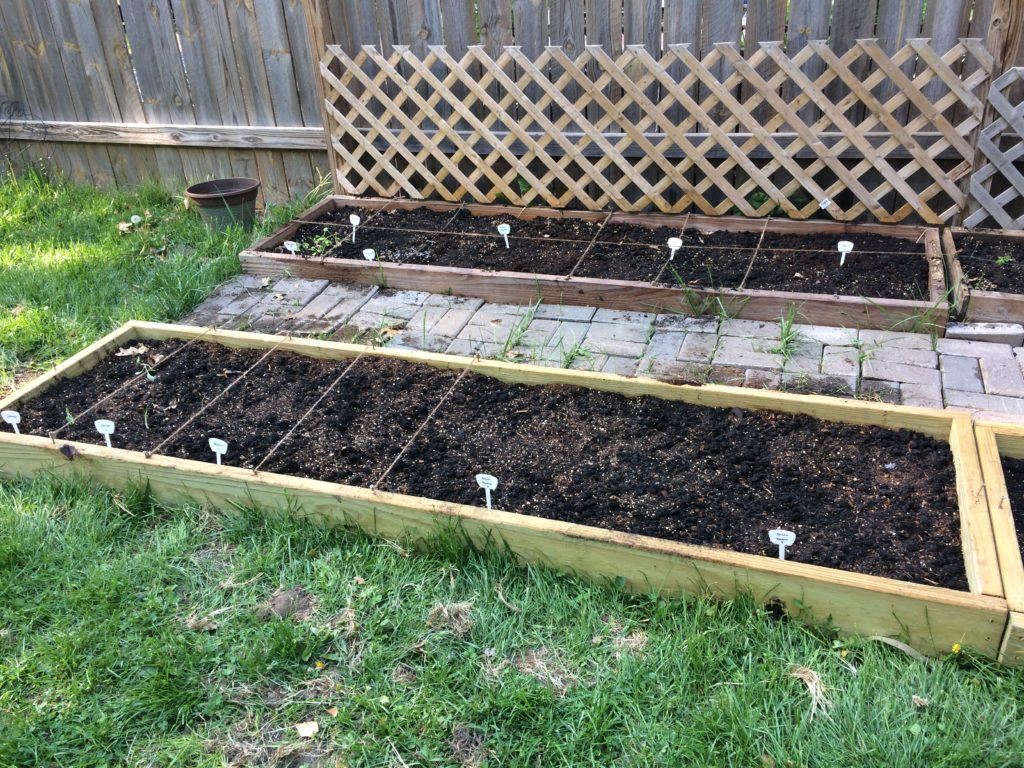
What I DON’T Plant
There are several crops I just don’t bother with at all. I don’t plant lettuce, even though it’s an early harvest and easy to grow. Quite honestly, we just don’t like how it tastes out of the garden! It’s like eating leaves straight from a tree. And the backyard wildlife DOES like garden lettuce, so squirrels and rabbits are extra-tempted to trespass for it. Maybe someday I’ll find a variety I like, but I’m happy to buy it from a store or co-op for now.
There are other plants that we adore, but it’s not worth it to grow our own. For example, though we love it and eat it several times a week, I don’t bother with broccoli anymore. One plant takes up a lot of space and only gives us one small head of broccoli. Plus it always seems to go to flower before I harvest it! I also don’t grow my own peas. It would take dozens of plants, and a ton of work, to make just one bowl of peas for my family. And let’s be honest, I’m really bad at getting my garden in early enough for this cold crop!
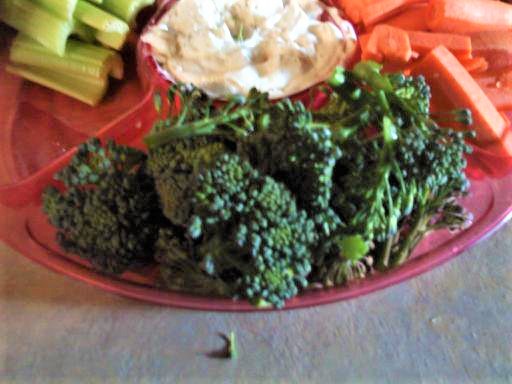
Quick Garden Tips From The Recovering Brown Thumb
Marigolds: In addition to growing the veggies we love, I always fit in marigolds wherever I can. They do a fantastic job of keeping bugs away! Last year some of my marigolds grew to be beasts – I’m talking as tall as me! This year I made sure to buy a petite bush variety. Since they’re small and the asparagus won’t get very big this year, I even stuck a couple marigold seeds between my asparagus plants. As a bonus, chickens love marigolds, and the flowers give their eggs a nice dark orange color!
Companion planting: I haven’t quite gotten good at this yet, but certain plants grow really well with others. If you want to learn how to do it, a great book on companion planting is “Carrots Love Tomatoes“. For now I do it the easy way: foods that taste good together often grow well together. So I plant onions, garlic, and cabbage near each other; my carrots next to potatoes; peppers by tomatoes, etc. This may not always work, but so far I haven’t had any big flops. My mom did end up with hybrid zucchini pumpkins one year, though! (Zucckins? Pumpchini?)
Change it up: For most plants it’s usually a good idea to switch your crops around each year. This allows the soil to recapture some of the nutrients it’s lost, as different plants require different minerals. I especially make sure to change where I plant my tomatoes and cucumbers each year, since those are my biggest crops. If you get any kind of squash root rot like I did last year, be sure to plant in a different area the next year, as that bacteria will stay in the soil. Thankfully it won’t transfer to other types of plants!
Plan ahead for sun: Pay attention to how tall your plants will be when full-grown. You don’t want your tall tomatoes blocking out the sun for your short broccoli, for example! And make sure those marigolds you planted won’t grow to be 5 feet tall. Not that I know from experience or anything.
The Finished Product
I’m pretty happy with the way it all turned out. The garden still hugs the fence and doesn’t take up much yard space, which is good because I don’t have a lot to begin with! The path is really cute too, even with grass growing between the bricks. I’m excited to see how well my “exotic” plants do in the square foot garden. The sweet potato is doing great and has nearly tripled in size! The corn is up and looking good too, the asparagus has gotten huge, but I see no sign of any pumpkins or watermelons yet. Gardening is really about patience and faith!
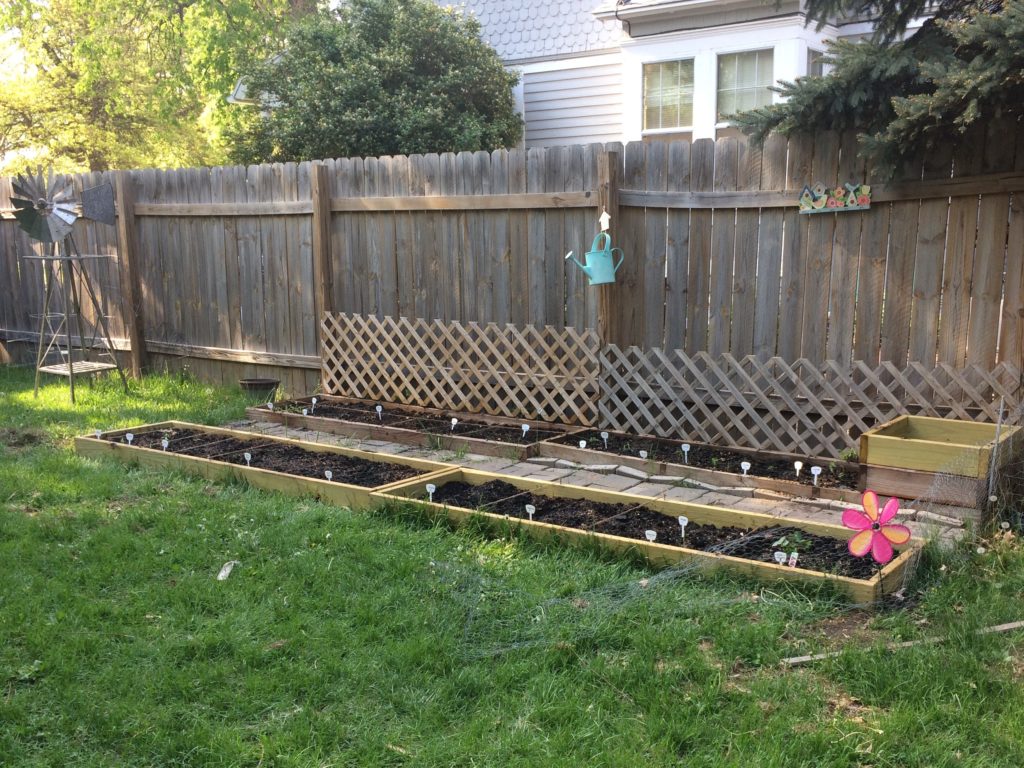
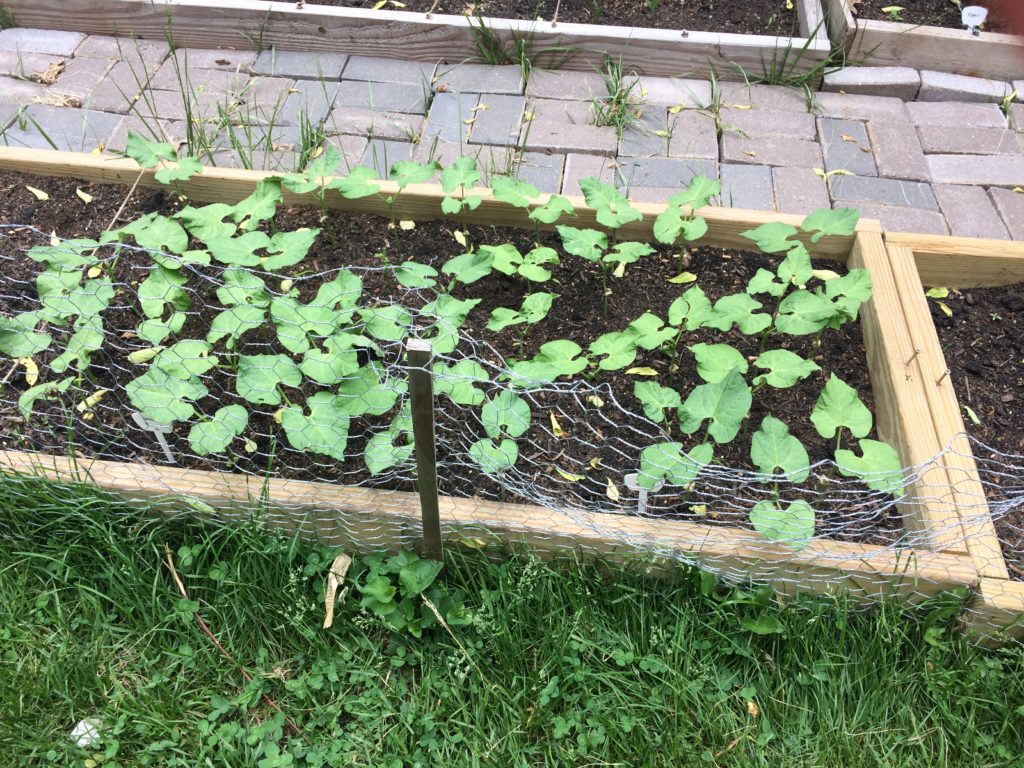
What did YOU plant this year?